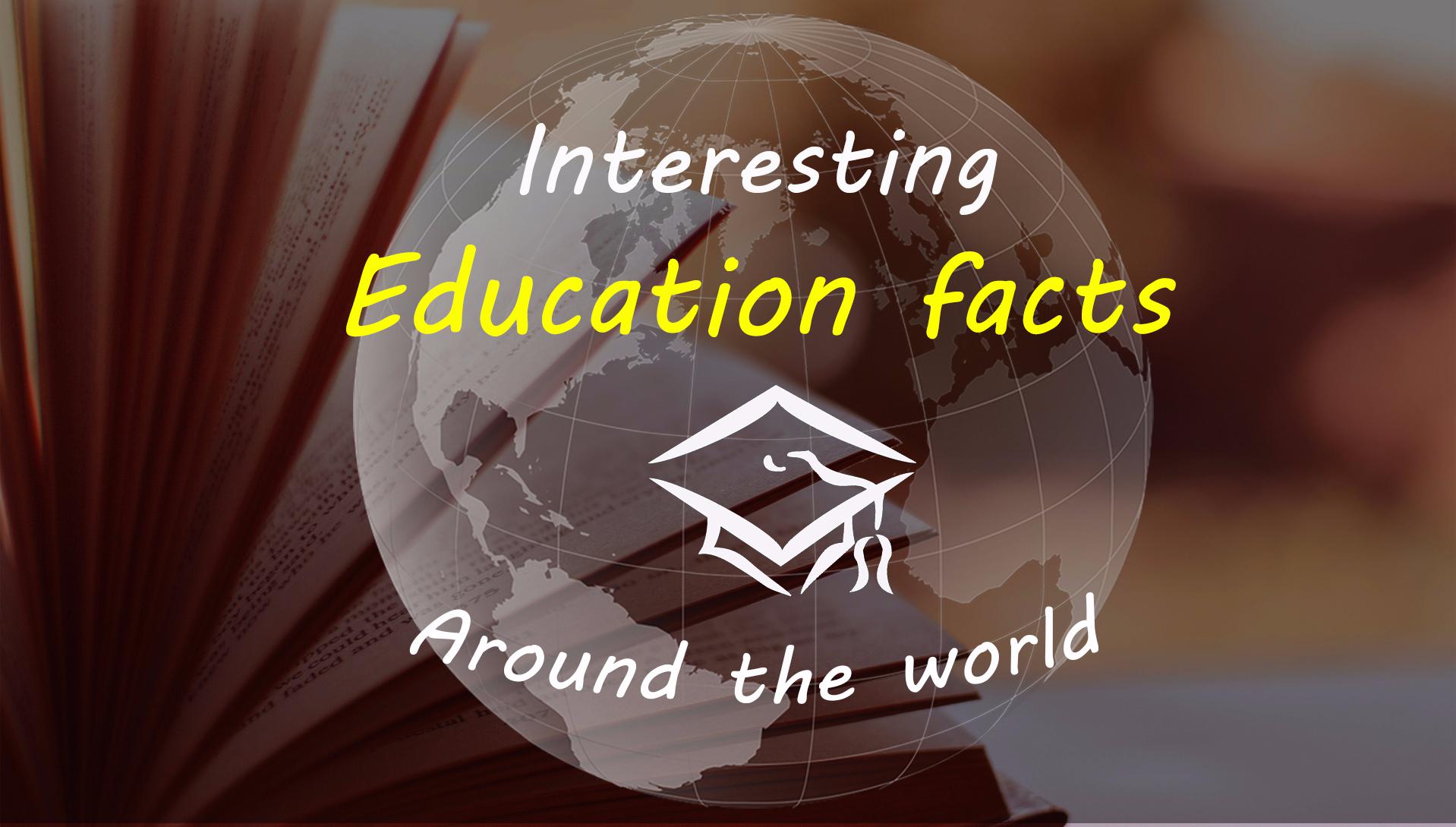Interesting Education Facts Around the World


Things that concern educationists all over the world do not differ much from country to country. How long should the school day be? What classes should be made mandatory? When should a school year start? What is the maximum number of children that one teacher can handle effectively?
However, educational systems of different countries are all unique and unlike each other. For example, some would argue that Africa has a weird education. Others would notice that former Soviet Union countries and other developing countries have a strange education approach. Taking a closer look at other cultures, we can notice many fun educational facts. This article will not be evaluating the benefits and pitfalls. Rather, we will explore the education principles around the world and name the peculiarities of unusual education systems in various countries.
Education in developed countries facts
Developed countries offer excellent educational opportunities for all ages and tastes. Nevertheless, you can find some really surprising things if you decide to dig a little deeper into the topic. If you are planning to to get an education in a certain country or simply want to compare your education system to that of other societies, the following education facts and statistics will be of major interest for you.
- In Holland, kids start their school program on their 4th birthday. Birthday dates differ, so the school year for each child starts at a different time. Isn’t it fun to welcome someone new in the first grade from time to time?
- Canada education facts will impress most of the Americans. The lessons are taught in both French and English as both languages are official in Canada.
- French education facts will astonish those who love vacations. France has the shortest school year in the world, although the school day is the longest one (to cover the rich vacation time). Apart from that, French schools have the true “lunch ceremony” that lasts for an hour or two. No plastic or paper plates and no hurry. Children consume their meals in a relaxed atmosphere where they are taught good manners and etiquette, meal preparation rules, and origins of the food.
- UK education facts deserve the honor and admiration. UK has the oldest boarding school in the world – The King’s School in Canterbury, which was established in 1567 and now is one of the most advanced in technological side.
- Finland education facts would probably impress the Netherlanders who start school at the age of 4. In Finland, children start school at 7. It is one of the oldest school starting ages in the world. Nevertheless, Finland children score on the top in the international testing.
- There are numerous facts about the education in America, as the country is huge. Here you can find the oldest teacher in the world (Agnes Zhelesnik is 102 years old, and she is still teaching). The USA has the highest governmental spending on education and the highest tuitions. Besides, America is number one international student hosting country.
- Swedish education facts would be interesting to lazy students. Swedish high school students get paid $187 per month for the school attendance. The corporal punishment of children is banned in Sweden since 1979. 87% of Sweden citizens have a high school diploma.
- Norway education facts will attract those who seek cheap programs. All public schools including the universities with Master and PhD programs are free, even for international students.
- Moving from the North to the South, it is interesting to explore the key Hispanic education facts. School education is mandatory for pupils between 6 and 16. Although the schools are free of charge, parents have to pay for the books and other studying materials (approximately 300 EUR per year). Spain is very religious country, so students have many day-offs that are dedicated to various religious holidays.
Education in third world countries facts
The entirely weird situation with education has arisen in so-called “third world countries”. Modern realities for African, some Asian, and some Latin American countries include no compulsory schooling for children or the minimal required years.
- For example, children in Kenya are not required to go to school. Nevertheless, most of the families understand the value of having a good education and send their kids to schools.
- In Pakistan children are not offered free education. The mandatory program runs between the ages of five and nine (only 4 or 5 grades).
- Facts about education in Africa are frightening to most European and American citizens. For instance, 40% of the African population over the age of 15 are illiterate. The tests show that even those enrolled in schools do not receive the necessary educational value. For instance, in Zambia, Ethiopia, and Nigeria more than 50% of in-school students do not learn the basic skills in primary school.
- The student per teacher ratio in Sub-Saharan region is 40, whereas some countries have the ratio of 60.
- The lack of educational institutions offering the graduate degree is one more challenge for most African students. Very often those who want to get the Master’s or PhD degree have to look for foreign opportunities.
- Aside from the sad facts about education in poor countries, there are also some fun ones. Because of the problems with flooding, Bangladesh constructed more than 100 boat schools. Boat schools have internet access, libraries, and other facilities that work on solar energy.
Education in developing countries facts
The last group of countries is the developing ones, such as China, India, Brazil, and Argentina.
Reviewing various interesting educational facts, one may notice that education in Africa is marked with the extremely low level of literacy, lack of good schools and higher educational institutions. Education in developing countries is on the way of transformation. Some countries, like India, have keen emphasis on education and require their pupils to study hard. Developed countries have the most sophisticated approaches. Some of them offer free higher education while others are known for superior quality and extremely high tuition fees. Knowing the peculiarities of other countries, you can compare your own school to the best or the worst schools in the world.
- Chinese children get the most homework in the world. On average, a Chinese pupil spends no less than 14 hours a week on homework. In addition, Chinese classrooms are the most crowded in the world. The average number of pupils in the class is above 50.
- An interesting education fact about India: this country runs the largest school in the world. The City Montessori School enrolls more than 32000 pupils.
- In Brazil, school day starts as early as 7 a.m. This is made to compensate for the extended lunch time, when students have an opportunity to go home for a meal.
- In Argentina, Chili, and most countries of the Southern hemisphere, children have their summer breaks in winter. The summer holidays there are from December to March.